1. Add subview to ViewController
Let’s get started by adding a subview into the view controller. This subview will be our custom navigation bar. Let’s setup auto layout accordingly.
Setting up auto layout constraints on custom navigation bar
NavBar.Height = 44
NavBar.Top = Safe Area.Top
NavBar.Leading = Safe Area.Leading
NavBar.Trailing = Safe Area.Trailing
the constraints are between the custom navigation bar and the safe area
2. Add ImageView as Background
Take an image view that display our background image. This imageview should be behind our custom view for navigation bar
Setting up auto layout constraints on image view
Image View.Top = Superview.Top
Image View.Leading = Superview.Leading
Image View.Trailing = Superview.Trailing
Image View.Bottom = NavBar.Bottom (For this drag from imageview to customview and choose last baseline constraint)
Leading and trailing constraints are all between the image view and it’s superview.
For the bottom constraint, we will set it between NavBar.Bottom and Image View.Bottom. The purpose of this is to make sure that the image view will cover up the entire custom navigation bar.
3. Final Step
A. Set clear color of custom view
B. Set image on imageview
C. Make sure the content mode of imageview is “Aspect Fill” and “Clip to Bounds” is checked.
4. Unit Test
Test this in all devices from iPhone 5 to iPhone X.
In all devices expect iPhone X our custom view with image is 64 pixel, and in iPhone X it is using the safe area also.
Behaving the same way as default navigation bar.

